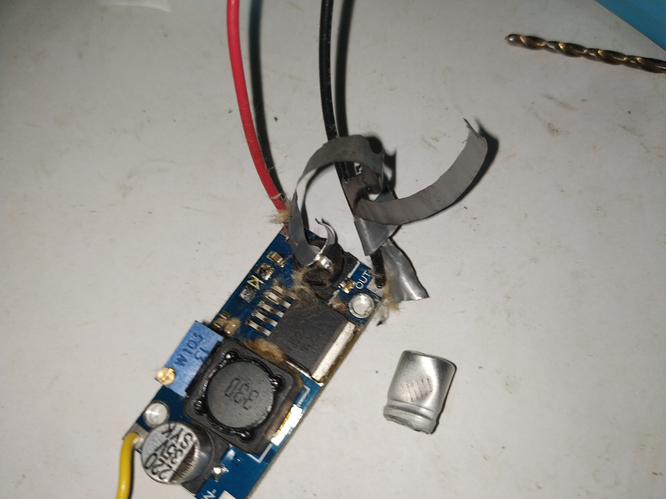So I blew up a capacitor for a boost converter today. It was working in the solution just fine for months, then suddenly boom. Could it have been because I was overloading it, or perhaps it was just its time?
It just coughed as had to much of that Cat Fur in it!
Reversed or over voltage
In otherwords there may have been a malfunction of the control chip that cause a massive overvoltage of the output. Perhaps because of my constant switching of the input voltage?
Do it again, but shoot a video next time… slooooow motion please !!!
I am in no hurry to blow up another. I just want to know why it happened so I could prevent a future situation like that.
If you can provide a schematic and the exact part number for the capacitor we could check things over with a little bit more rigor. Or at the very least make sure you are using the boost regulator vendor’s “recommended” capacitor. Also the boost regulator input voltage and current ratings from power supply would be helpful.
Phil
that looks to me to be a cheap ebay special power supply module, so schematics will be based exactly on the datasheet, and parts will be the likely quality (price) lever they use and so the failed cap is more than likely to be a cheapie - certainly one a user would never be able to backtrack and say who made it and if the specs lined up
Therefore, it’s cheapness may have been the problem. Sigh.
I guess I should just upgrade my entire 3d printer to 24 volts and done.
EDIT: Or just switch my hotend to the 12 volt one; which is much cheaper.
what input voltage were you using? And what hotend voltage is it at the moment? Is that at one of the limits of that module’s capability?
Honestly because there’s a high amount of cycle time on the hotend, you might need additional capacitance but I would not expect that kind of PID (or PID like) control to be a cause of the failure, but you never know - that kind of power supply is intended to be a charge supply for a “regular” load.
Input voltage is 12V. Hotend is rated for 24V, 40W. So the current is around 3.5 amps (the device’s limit is 4 amps).
oh, it’s a boost?
I can’t really comment more because you’d need to say what the module was to see it’s rating. I had a quick look and the only boost converters I’ve bought were 1A jobbies (2A max)
Yea, it was a boost, simmilar to this one. Oddly enough it seems they changed the product since I purchased it. humm… suspect.
https://www.amazon.com/eBoot-Converter-Voltage-Adjustable-Step-up/dp/B06XWSV89D/
lucky they are cheap and throw away items, right?
Assuming you have a module with the XL6009 control chip, this http://www.haoyuelectronics.com/Attachment/XL6009/XL6009-DC-DC-Converter-Datasheet.pdf might show what I somewhat feel is a gap - the 2.5A is taken with an offset voltage of 0, which in my mind probably means Vin=Vout, not your case where you double the output. But anyway, perhaps the module went out of spec and gave the cap an over-voltage hit, which blew it up - or perhaps the cap just failed because it was cheap/nasty , I guess we’ll not really know
Perhaps something I’d do differently after the second (or third) one failed in the same way, look at a more robust module to do this (or reverse the methodology so I down-converted to the common voltages I wanted)…
Sigh, ok gotta wait till it fails again then.
Sorry for over thinking this, just buy a better power module.
Phil
Hmm. Looks to me like you squeezed it with a pair of pliers. Is that why it blew up? 
